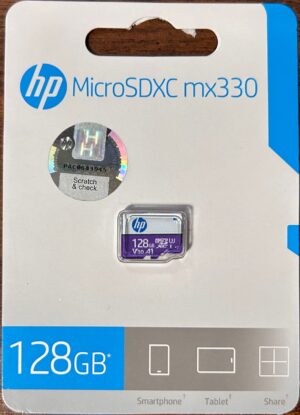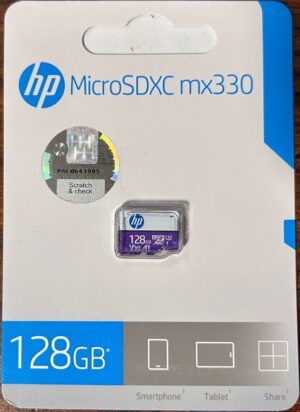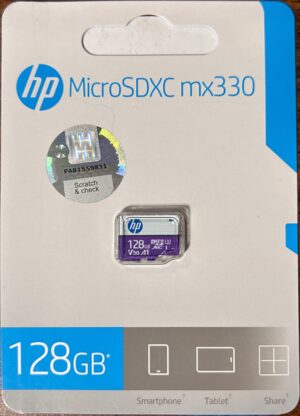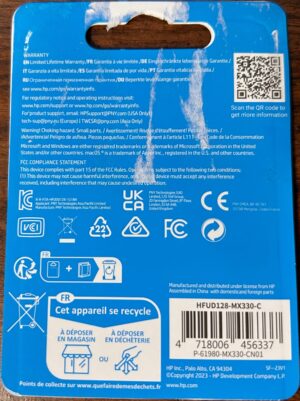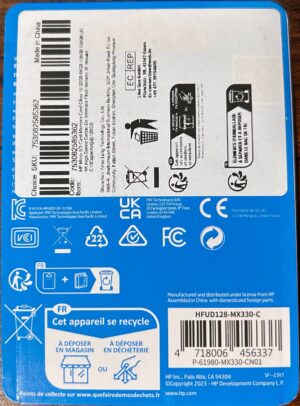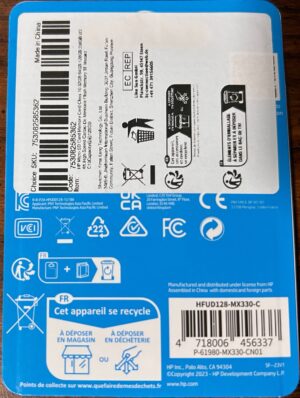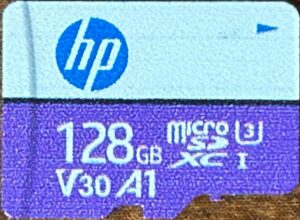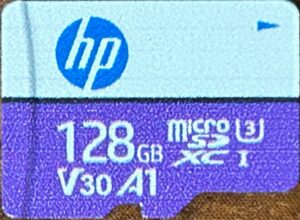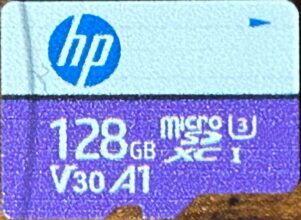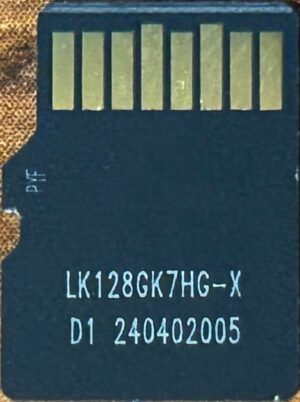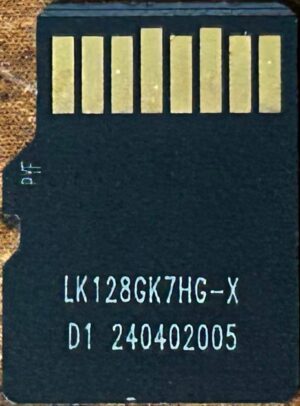- Obtained from: AliExpress
- Price paid: $4.69
- Advertised capacity: 128GB
- Logical capacity: 125,069,950,976 bytes
- Physical capacity: 125,069,950,976 bytes
- Fake/skimpy flash: Skimpy (2.29% skimp)
- Protected area: 134,217,728 bytes (inaccessible)
- Speed class markings: U3, V30, A1
- CID data:
- Manufacturer ID:
0xfe - OEM ID:
0x3432(ASCII:42) - Product name:
0x5344000000(ASCII:SD) - Product revision:
0x20
- Manufacturer ID:
Discussion
After purchasing the 64GB version of this card, I saw the 128GB version pop up in AliExpress’s bundle sales and decided to snatch it up. At first glance, this would appear to be identical to the 64GB sibling, just in a higher capacity — the card artwork is the same, and the package is the same, except for the 128GB mark instead of the 64GB mark — however, on closer inspection, this isn’t the case. This is an interesting case study in how two different cards — that can appear to be the same model, just different capacities — can be completely different products.
Like I said, both cards are in almost identical packaging, including the allusions to PNY being the underlying vendor. The artwork on the front of the card also appears to be identical — although from the pictures, it looks like there’s a difference in the shade of purple that was used between the two. I didn’t look closely at this in person before starting the testing process, so it could simply be differences in lighting between the two sets of pictures. Looking at the back of the card, however, you can tell that the style of printing is completely different between the two.
And, plugging it in, we can see that the manufacturer IDs/OEM IDs are completely different — the 64GB version uses manufacturer ID 0x27 — which is pretty well known to belong to Phison — while this version uses manufacturer ID 0xfe. I don’t know who this manufacturer ID belongs to exactly, but I’ve only ever seen it with off-brands before now — the Auotkn Extreme 8GB, Bekit, Cloudisk, and Reletech.
All of this points to the conclusion that PNY went with a cheaper manufacturer for the 128GB version — and it shows in the results. This card got sequential write scores that were more than one standard deviation above average — with the lowest of the three scores putting it into the 90th percentile — but it only goes downhill from there. Two of the three got sequential read scores that were only a little bit above average, but the third got a score that was pretty far below average. All three got random write scores that were below average, while two of the three got random read scores that were more than one standard deviation below average. (The third got a score that was just under one standard deviation below average.) This is a stark contrast to the 64GB version produced by Phison, where every sample got above average scores in every category.
The card bears the U3, V30, and A1 markings. While it performed well enough to qualify for the U3 and V30 markings, the abysmal random I/O performance put it far short of the level it needed to be at to qualify for the A1 marking. Perhaps these cards would have done better had then been tested under proper conditions…but somehow, I doubt it.
Endurance tests for all three cards are still ongoing. None of the three has made it to the 2,000 read/write cycle mark. Sample #1 is currently expected to reach this point sometime in January 2025, while samples #2 and #3 are expected sometime in February 2025.
June 9, 2024


